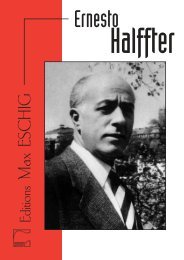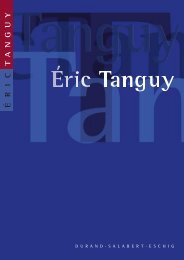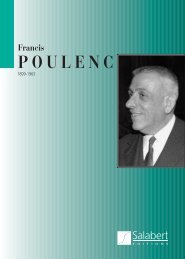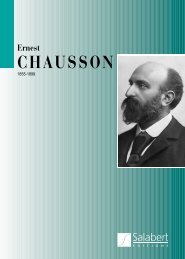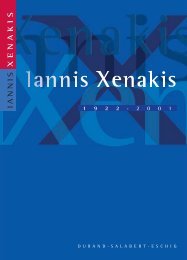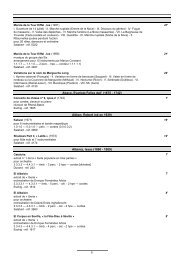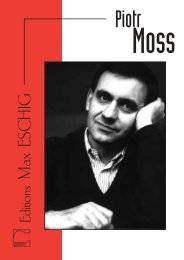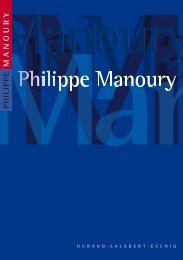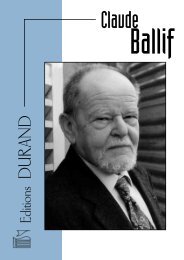Arthur Honegger - durand-salabert-eschig
Arthur Honegger - durand-salabert-eschig
Arthur Honegger - durand-salabert-eschig
Create successful ePaper yourself
Turn your PDF publications into a flip-book with our unique Google optimized e-Paper software.
Horace<br />
victorieux<br />
(1920-21)<br />
<strong>Honegger</strong> found his own style very early on, after<br />
astonishingly little groping around in youthful<br />
experimentation. He is to be found whole and entire in<br />
his first score for large orchestra, Le Chant de Nigamon,<br />
of 1917, and, three years later, he gave us one of his most<br />
powerful and daring scores, Horace Victorieux, a work<br />
that he subsequently considered, along with Antigone,<br />
to be his most successful work, which goes to prove the<br />
lucidity of his judgment.<br />
Rapidly composed between December 1920 and February<br />
1921, Horace Victorieux was not, however, orchestrated<br />
until August 1921, for in the meantime <strong>Honegger</strong> had had<br />
to respond to the urgent commission of Le Roi David. One<br />
cannot think of two more contrasting works, and indeed<br />
Horace has never met with the popularity of Le Roi David,<br />
something the composer in fact understood very well.<br />
Even today, the work retains a singular freshness, and its<br />
harshness has in no way been attenuated.<br />
At first the project was for a ballet-pantomime, with<br />
scenario, scenery and costumes by Guy Fauconnet, but the<br />
latter’s sudden, premature death led <strong>Honegger</strong> to rework<br />
his score for the concert hall in the shape we know today,<br />
that of a “mimed symphony” in eight linked episodes for<br />
large orchestra lasting some eighteen minutes. Ernest<br />
Ansermet conducted the first performance in Lausanne<br />
only a few weeks after it had been finished, on 31 October<br />
1921, though it was not until December 1927 that it was<br />
finally given a stage premiere, in Essen, in Germany.<br />
No other work by <strong>Honegger</strong> so clearly underlines the<br />
huge distance that separated him from his comrades in<br />
the Groupe des Six. As far removed from their “cult of the<br />
fairground and the music-hall” as from the refinement<br />
of the impressionists, <strong>Honegger</strong> offers us here the most<br />
vehement and the most expressionist of all his scores<br />
written in France up till then, and even afterwards. One<br />
notices his predilection for clear-cut, dotted rhythms, for<br />
packets of dissonant chords in the trumpets and trombones<br />
(often with mutes on to bring out the bite), for extremely<br />
tense violins in the high tessitura, for bristly, chromatic<br />
counterpoint with unbending harmonic tension, within<br />
which only rough fourths and fifths refer, ever more<br />
distantly, to a tonality that is in fact absent for most of<br />
the time.<br />
14



